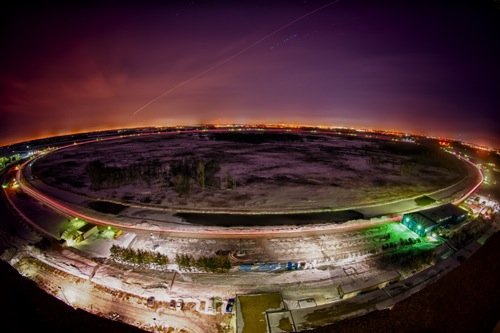Higgs week is here!
This week, the search for the Higgs boson —the elusive subatomic particle that is a critical piece of the Standard Model of physics—may reach its climax when, on Wednesday, two research teams announce the results of their work at the Large Hadron Collider (LHC) at CERN.
But before there was the LHC, there was the Tevatron, a particle accelerator at Fermilab. And before the LHC’s big announcement, there was a not-quite-so-big

The Tevatron at Fermilab. Image courtesy of Fermilab.
The Tevatron shut down last year , passing the baton to the newer, more powerful LHC. But the scientists working on two of the Tevatron’s detectors, CDF and DZero, haven’t given up searching for traces of the Higgs in their own data. Using ever-smarter computer algorithms, they aim to wring as much information as they can out of the data they’ve accumulated. As Wade Fisher, the Michigan State University scientist representing DZero at this morning’s conference, put it: “We’re still working, we’re not stopping….There’s still gas in the tank.”
What they’ve found so far is suggestive of the Higgs, but doesn’t rise to the level of discovery. Combining data from both CDF and DZero, they’ve eked out a signal that might be due to the Higgs, but there is also a one-in-550 chance that it is down to random fluctuations.
To claim a discovery , the physicists need to whittle that random-chance number down to one in three and a half million—“five sigma,” in stat-speak.
That’s what the physics world will be holding its breath for on Wednesday, when two LHC collaborations release their results.
Will they confirm the hints that the Tevatron has seen? Or will these inklings—and our hopes of completing the Standard Model of physics–evaporate into the mist of random fluctuations?
As Fermilab’s Eric James put it this morning: “We’re likely, after all this time, to find something out one way or the other.”

